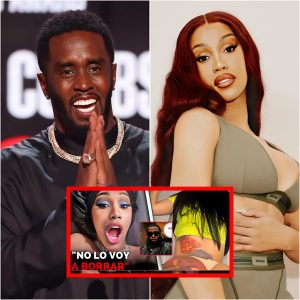Luther Vandross, an iconic figure in the music industry, was renowned for his soulful voice and romantic ballads. However, behind the scenes of his legendary career, troubling claims have emerged suggesting that Vandross faced immense pressure from white elites in Hollywood to conform to certain dictates—including being coerced into relationships with men to achieve success. These allegations have sparked widespread conversations about the treatment of Black artists in a predominantly white industry.

The Struggles of a Legend
Despite his legendary status, Vandross grappled with personal and professional challenges that complicated his identity. In multiple interviews, he expressed his struggles with love and acceptance. In a 2001 conversation with Vibe, Vandross acknowledged the cost of his privacy, admitting, “I do wonder if it’s worth it.” Even on a platform where vulnerability could thrive, he remained guarded, citing concerns for his mother’s feelings and the potential backlash from his primarily female fan base.
Vandross’s close friend, Patti LaBelle, later confirmed the longstanding rumors about his sexual orientation, highlighting the emotional distress he faced due to societal expectations. LaBelle recounted how Vandross never publicly came out, fearing societal and familial repercussions—even as those around him recognized his struggles. This revelation struck a chord with many, who saw a deeper narrative of vulnerability in his music.
Allegations of Coercion by Industry Elites
As discussions about Vandross’s life continue to unfold, the conversation has shifted towards a darker theme: the alleged manipulation and coercion faced by Black men in the music and entertainment industry at the hands of white elites. Speculation suggests Vandross may have been subjected to undue pressures that steered his career and personal life in troubling directions.
Many insiders have drawn connections between these pressures and the behavior of specific figures within the industry. These individuals, who have exerted control over the careers of Black artists, reportedly pushed them into compromising positions for career advancement. The narrative points to a disturbing trend of Black men, facing the choice between compliance with these pressures or risking their careers altogether.
Historical Context and Industry Patterns
This theme isn’t new. Comedian Dave Chappelle has long spoken out about how Black men in the industry are often manipulated into portraying effeminate roles or engaging in relationships that serve the interests of the elites. Chappelle’s experiences, particularly his dramatic exit from the Chappelle Show, underscore the deeply entrenched issues surrounding artistic integrity and identity, as he chose to walk away rather than conform to an industry eager to exploit him.
Similarly, other notable figures, including Terrence Howard and Godfrey, have been vocal about the pressure to conform to these damaging stereotypes. Howard pointed out that Hollywood narratives tend to diminish the strength and masculinity of Black men, effectively infantilizing their portrayals on screen. This sentiment was echoed across various platforms, suggesting a systemic issue where the industry benefits from undermining Black masculinity.
The Hidden Struggles of Black Artists

In a chilling commentary on industry dynamics, many entertainers have revealed that their ascendance in the industry can sometimes necessitate uncomfortable compromises. Actors like Martin Lawrence and Jamie Foxx reflect the ongoing debate surrounding the roles Black men are often pushed to take—often at the expense of their dignity and personal beliefs.
Vandross’s situation, viewed through this broader context, illustrates how elusive true autonomy can be for Black artists. His experiences are emblematic of a culture within the industry that often prioritizes profits over the personal well-being of its talents. The narrative suggests that many Black men, like Vandross, have navigated this complex landscape while grappling with the dual identity of being both a public figure and a target of coercion and exploitation.
Conclusion: A Call for Change
As the conversation around Vandross and his contemporaries continues to gain momentum, it beckons a broader examination of the structural inequalities in the entertainment industry. The potential exploitation of Black artists by white elites raises critical questions about agency, identity, and the lengths to which individuals must go to achieve recognition and success.
It’s crucial for the industry to engage in meaningful dialogues that address these inequities and create support systems that allow artists to thrive without compromising their integrity. The stories of Vandross and those like him remind us of the importance of equity and respect in all creative endeavors.
As the public reflects on these revelations, it’s vital to listen to the undercurrents of these narratives, urging for a future where artists can exist authentically and unapologetically in an industry eager for their talents but slow to accord them the dignity they deserve. What are your thoughts on the pressures faced by Black artists in Hollywood? Join the conversation in the comments below.






